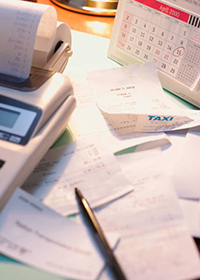 The aviation industry has been hard hit with the economic storm over the past year. But there may be some light in the gray clouds at tax time for those who purchased aircraft to use for business purposes.
The aviation industry has been hard hit with the economic storm over the past year. But there may be some light in the gray clouds at tax time for those who purchased aircraft to use for business purposes.
President Obama’s stimulus measure, formally known as The American Recovery and Reinvestment Act of 2009, provides tax benefits for qualifying 2009 aircraft purchases and their improvements if they are used for business at least 50% of the time. And depending on the price of the new or used aircraft, it may be possible to deduct up to 100% of the cost in the year the aircraft was placed in service. New carry back/carry forward provisions may allow use of some of this deduction against profits.
Here are some of the details—but remember that it is critical to have a qualified financial professional review your specific situation.
- Both 2009 and 2008 contracted aircraft purchases with a 2009 service placement date generally qualify. Certain 2009 purchases with a 2010 service placement may qualify for the percentage of construction completed in 2009.
- IRC section 179 small-business expensing of up to $250,000 is available for qualifying new or used aircraft up to $800,000 with a 100% rate on the first $250,000. Limit is by taxpayer entity, to be divided upon all assets as desired.
- Bonus depreciation at a rate of 50% is available for qualifying new aircraft starting above $200,000.
- Certain fractional, leaseback, and factory demo aircraft may qualify.
- Major overhauls or new engine(s) may qualify if the business aircraft is owned by the existing taxpayer.
- State sales taxes and excise taxes are deductible on Federal returns for 2009.
AOPA’s publication, The Pilot’s Guide to Taxes reviews the basics related to income taxes, sales and use taxes, and personal property taxes as they might affect aircraft owners.
Part one deals with income tax issues related to aircraft expenses, flight training expenses, the “hobby loss” rule, and aircraft leasing. Part two tackles the basics of sales and use tax issues and explains the difference between the two. Part three reviews the essentials of personal property taxes and registration fees and includes a list of those states that impose them. Question and answer sections address common tax concerns.
This information is meant to be informational only, as AOPA is not licensed to give tax advice. You must contact a tax advisor to discuss your own unique financial circumstances. If you need help finding a tax professional with aviation experience in your area, call AOPA’s Pilot Information Center, 800-USA-AOPA (872-2672).



